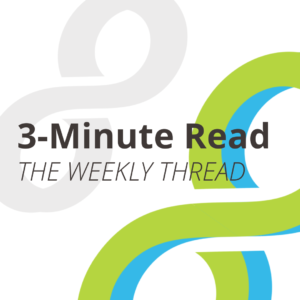Tipping the Scales: NSF’s Directorate for Technology, Innovation and Partnerships
Sept. 26, 2023 —The United States’ National Science Foundation (NSF) is perhaps the most well-known funder of research in the United States, funding about 25% of all federal support to U.S. colleges and universities for basic research. Since 1950, it has been tasked with promoting the progress of science, advancing national health, prosperity, and research, and securing national defense.
—The United States’ National Science Foundation (NSF) is perhaps the most well-known funder of research in the United States, funding about 25% of all federal support to U.S. colleges and universities for basic research. Since 1950, it has been tasked with promoting the progress of science, advancing national health, prosperity, and research, and securing national defense.
In 2022, NSF established a new directorate for the first time in over 30 years: the Directorate for Technology, Innovation and Partnerships (TIP). But what exactly is this new directorate, and how can your organization leverage the opportunities it presents?
Role and focus
TIP is cross-cutting; unlike many other sections within NSF, it does not focus on a single science discipline for research funding. At its announcement, NSF Director Sethuraman Panchanathan described TIP as a “game-changer in terms of the pace of technological breakthroughs, future job growth, and national competitiveness.” TIP was created to forge cross-sector partnerships for research in 10 key technology areas addressing societal and economic challenges. TIP funds use-inspired and translational research in many different disciplines because addressing complex global challenges often requires researchers in different fields to work together. TIP intentionally crosses silos to collaborate with other directorates and external stakeholders, both co-funding existing programs and launching new ones.
Another key TIP emphasis is creating new education and research pathways to enable a diverse and skilled future technical workforce. This directly supports NSF’s Missing Millions goal, which works to engage students, faculty, and other potential workers who are not currently involved in STEM fields because they lack training resources or access to technology.
Achievements and impact
Since passage of the CHIPS and Science Act, the TIP Directorate has managed over 1,700 awards, issued more than 760 new awards, and partnered with 10 different federal agencies and more than 10 industry groups or nonprofits. TIP’s Regional Innovation Engines program received over 700 concept outlines for awards spanning more than 500 organizations; 40% of these organizations had never before received funding from NSF, demonstrating that large, collaborative awards are a vehicle to engage more organizations in the nation’s R&D activities.
Importantly, TIP’s projects intentionally engage partners in industry and nonprofit sectors—not just academic researchers. For example, last week, TIP announced a $2 million pilot program to support increased involvement and success for entrepreneurs from historically underserved communities and bring their innovations to market with broad societal benefits. “This new pilot strengthens our commitment to developing an innovation ecosystem that engages and benefits all Americans,” said Erwin Gianchandani, assistant director of TIP. “Through co-design and prototyping efforts, teams will develop a set of tools and recommendations to support individualized journeys down the entrepreneurial path.” The pilot program will feature up to 40 teams of innovators from underserved groups identifying barriers to pursuing seed funding, designing new tools to support these communities, and proposing new initiatives to improve opportunities for historically underrepresented groups. Learn more about the new pilot here.
Why it matters
TIP seeks to greatly expand the number and scope of multi-sector research partnerships that address complex global challenges; several of its programs invite companies and nonprofits to lead projects. TIP offers great opportunities and many of its programs are bold and nontraditional, which can be a challenge for researchers preparing to pursue these awards. Understanding the focus and scope of TIP can help organizations leverage future and current funding opportunities for use-inspired and translational research.
We want to hear from you. How has your organization engaged with NSF’s TIP Directorate? Let us know on our LinkedIn profile.


